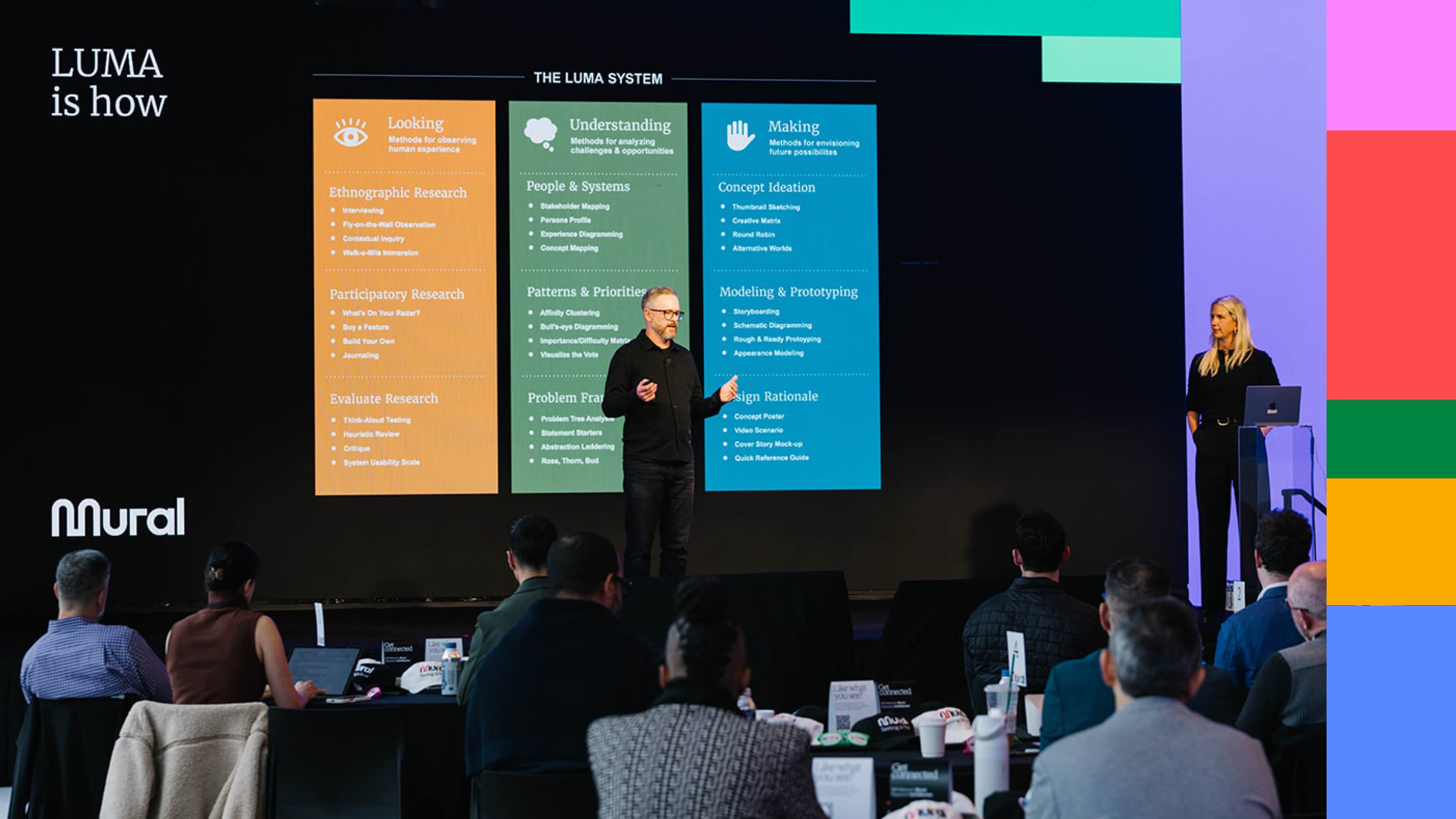Since 2020, teams across the globe have faced relentless waves of disruption. Distributed teams in particular have experienced ongoing challenges since seemingly ever-changing office shifts (full remote, hybrid, RTO mandates, etc.), including managing remotely, evolving customer expectations, and constant technological transformation.
While some go-to-market teams struggle to stay aligned through these changes, others emerge stronger, more cohesive, and more innovative. What sets them apart isn’t luck. It’s how they intentionally build clarity and alignment into their work.
Sources of disruption are everywhere
The global pivot to remote work wasn’t the first disruption teams faced, and it won’t be the last. But it was a dramatic stress test. Teams immediately faced a number of disruptive factors:
- Tech overwhelm: Platform adoption was ad-hoc, and teams were juggling too many tools without intentional integration.
- Changing customer behaviors: Decision making moved online, making it harder for some to build and maintain relationships.
- Market volatility: Huge economic swings and supply chain disruption were constantly impacting team priorities and budgets.
- Global time zones: Operating across continents turned coordination into a challenge for distributed teams.
At the height of the pandemic, organizations were forced to adopt new tools, workflows, and ways of thinking, practically overnight. Many teams lost shared context, rhythm, and reliable ways to collaborate. Priorities became unclear. Meetings multiplied, but progress didn’t.
And yet, some teams thrived. Displaced gym-goers seeking health, routine, and community boosted Peloton’s adoption. They responded with ramped up production and expanded content offerings. Small retailers losing foot traffic discovered new tools from Shopify, allowing them to pivot to online sales, gift card schemes, and coordinated curb-side pickup.
These companies did not avoid disruption, but they were better equipped to adapt and align, even in chaos.
The hidden cost of misalignment
When disruption hits, the true cost isn’t just logistical. It’s strategic. Without clear alignment:
- Teams operate on assumptions instead of shared understanding.
- Time and effort is wasted on duplicated or misdirected work.
- Decision-making stalls or fractures.
- Morale dips as priorities and expectations remain murky.
In fast-moving environments, even high-performing teams can spin their wheels if they’re not working from the same page. Alignment isn’t just about agreement. It’s about clarity, focus, and follow-through.
Building alignment into how you work
Resilient go-to-market teams don’t wait for calm conditions to get aligned; they bake alignment into their everyday ways of working. At Mural, I had the experience of supporting thousands of teams through digital transformation and hypergrowth during and post pandemic. Three areas consistently separate the most aligned, adaptable teams from the rest:
1. Tools: Establish a shared digital workspace
When teams are distributed, digital tools become your workplace. But having the tools isn’t enough. They need to be intentionally selected and clearly understood.
Aligned teams define purpose and norms around communication, content and task management, and visual collaboration:
- Synchronous communication for high-context and collaborative moments. Pipeline reviews, deal strategy sessions, and real-time customer demos should happen face-to-face or on video.
- Asynchronous messaging maintains alignment in-between touchpoints. Quick updates, lead handoffs, or win/loss insights can be shared in chat or forums.
- Content sharing and storage to make information accessible. Sales decks, marketing collateral, battlecards, and case studies should be stored in the cloud in organized, accessible locations. Teams need to align on the best single location.
- Task and project tracking to drive accountability. Prospecting workflows, campaign launches, customer onboarding, and revenue milestones are clearly assigned in management systems. Once the team is aligned on outcomes, capturing the steps in more detail allows the team autonomy in achieving them.
- Visual collaboration for creativity and strategic alignment. Campaign planning, sales territory mapping, and account strategy sessions bring the work to life when done visually with digital whiteboards like Mural.
2. Teams: Design for flexibility and connection
Remote and hybrid teams aren’t one-size-fits-all. Are you co-located? Fully distributed? Spanning time zones?
The most aligned teams take time to:
- Understand their unique working contexts
- Set expectations around availability and responsiveness
- Make intentional decisions about meeting cadence and participation
- Create rituals and touchpoints to stay connected
When teams operate with transparency and empathy, they foster a culture where alignment isn’t enforced. It emerges naturally.
3. Strategy: Use repeatable methods for complex collaboration
Big-picture alignment comes from small, repeatable habits. Teams that use consistent methods to gather input, make decisions, and prioritize work can move faster, with less confusion and rework.
Human-centered design frameworks like LUMA’s system of innovation give teams shared guardrails. Instead of reinventing the wheel with every new challenge, teams can rely on proven techniques to:
- Make ideas visible
- Include diverse perspectives
- Iterate with confidence
- Move from insight to action, together
A new way of working
At Mural, we’ve spent over a decade helping teams navigate complexity with clarity. When the pandemic accelerated the future of work, our team wasn’t scrambling to adapt. We were scaling practices we had already built. We understood the unique character of our globally distributed teams and how to work efficiently among ourselves. Our focus was on identifying and framing the right challenge to solve before we rushed to a solution. We coordinated our work visually reducing confusion across language and time zone differences.
Today, we see more organizations realizing that alignment isn’t a one-time activity. It’s an everyday habit, built into the way teams collaborate, communicate, and create together. And it’s essential to resilience, innovation, and sustainable success.
Start your alignment journey
Whether you're just beginning to explore new ways of working or looking to scale what’s already working, Mural’s approach to human-centered design, the LUMA System, offers a powerful, practical framework for team alignment and collaboration.
Ready to explore it for yourself? Talk to our sales team to learn more about LUMA.



.avif)









